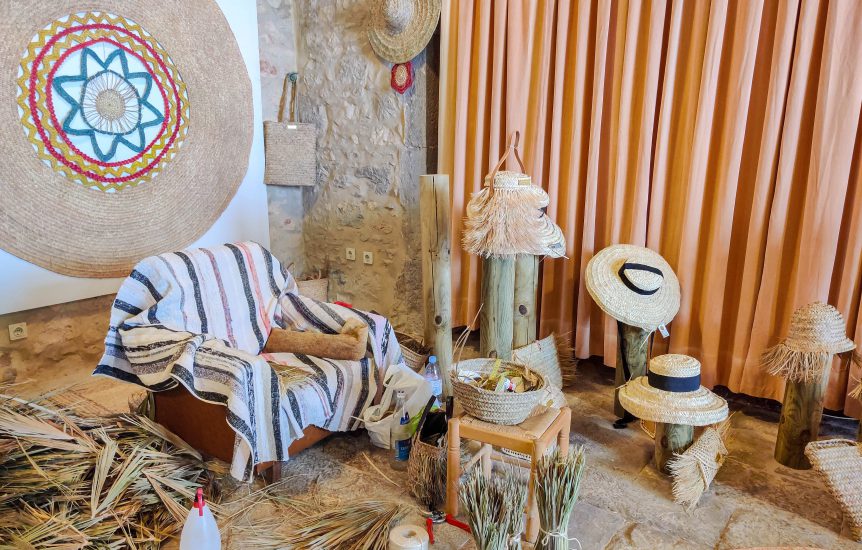- No products in the cart.
In the Algarve, from a whitewashed street, a braid with no end is extended, it has a gold colour, but is shy and less vain than the gold-tone. It is a palm tree braid, made by restless and full of conviction hands that gather the leaves of the broom-palm. And who knew that this is the quietest phase of the whole process?
It’s not a lack of care, as the meaning in the dictionary says for the word “empreita” (Portuguese for – weave the palm tree braid). The weaving palm tree masters do nothing at random, everything has to be thought out in advance. The whole process takes time, and weaving palm tree braid, a little bit of patience and much love gets mixed in as well.
The tree that offers this technique to the Algarve has got three names, a scientific one – Chamaerops humilis, a better-known name – Palmeira-anã, and the most popular – Palmeira-das-vassouras. It was because of a necessity that the people from the Algarve started weaving palm tree braid, and that goes back to the 16th century, due to some reports and traces found. The reason that led people to use the palm tree centuries ago was the same as last century. There were so many palm trees by the Algarve Barrocal it would be hard not to notice them and discover the usefulness of that slender leaf. They had the raw material, all that was left was to learn how to work it. It was neither the first or second attempts, but they made it and found the right formula to make the carrycots, donkey carrycots, and palm mats. All the palm tree products went to fieldwork, to pick and store carobs, almonds, and figs.
If someone knew about the several utilities the Short palm tree (Palmeira-anã) has, they would never have nicknamed it as the broom palm, rather the 1001-uses-palm-tree. It was given this name because, in the Algarve, small palm brooms are used to whitewash the houses during the summer.
Nowadays, it is difficult to imagine a rural Algarve and that the main occupation was picking dry fruits and fishing. The rural times are gone, and weaving palm tree braid, because it is so versatile, stuck around! It stayed because the braiding hands also teach, and those who teach safeguard the people’s history.

Maria João Gomes, the Palmas Douradas project leader, was also taught this ancient technique. There are still those who have the generosity to pass on such an ancient testimony, and not keep it for themselves as if it had only a single owner. For masters that teach, there will be students that learn, and there are a lot. It was the case of Maria João, who came to live in her family’s land and wanted to learn the weaving palm tree braid art, as her grandmother did. After learning the first technique, she didn’t rest until she learned all the others. She considers that she has the of art of weaving palm tree braid within her, for being the only person that knows all possible techniques. To this vast knowledge, she adds the typical talent of those who like contemporary design, and mainly realizes what the needs of today’s people are.
Maria João is keen to pick, treat and dry the palms that are born in Algarve soil, says that only this way does it make sense to continue. For her, it would be unimaginable to work with foreigner palm trees, that are already treated and bleached by sulphur. The Algarve palm tree has a colour of its own, and that is what makes it peculiar and pretty. In the Palmas Douradas studio, as we entered, we smelled a new but very pleasant smell. It is one of those fragrances that we can keep to create memories of places or moments. What certainly marks us are the pieces themselves, whether by the size of the rugs and mandalas, as well as by the genius we find in bags and carrycots.
Who knew, that by adding vegetable matter to creativity, we’d get a tradition legacy that reunites all the Algarve. Some traditions must be maintained, and even these must keep up with the times and evolve. That was the weaving palm tree braid journey, that we will keep around for how long we want to.
Find the products in our online store:

